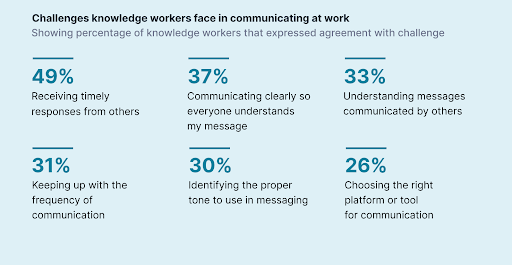10 Strategies for Seamless Agency Client Communication
Client communication is essential to any successful, long-term business relationship. Digital agencies might be able to close a deal based largely on their offering, but to sustain that client partnership and maximize its lifetime value, communication should be a top priority.
Social media is an important communication channel. Ensure you create content that connects with your audience by downloading our free “White-label social media checklist” now.
In this blog, we’ll dig into why you shouldn’t ignore this facet of running a digital agency, and dive into 10 actionable strategies you can implement right away to streamline your agency’s client communication and achieve your business goals faster.
Why is client communication important for agencies?
Client communication ensures agencies develop a deep understanding of their client’s needs and expectations, boosting client retention and satisfaction. It also improves digital agency deliverables: by communicating effectively with clients, your team can more easily stay on task and on time, delivering solutions that nail the client’s brief.
Acing understanding and knocking client expectations out of the park
It doesn’t matter how incredible your portfolio of solutions is if they don’t align with your client’s needs. Successful agencies take a problem-solving-first approach by aiming to first gather all necessary information about their client’s challenges and pain points and then look for a package of solutions that can solve those problems.
Adopting this orientation gives you a better chance of meeting—and exceeding—client expectations, even if you’re at the startup stage.
Improving retention and client satisfaction
A satisfied client who feels understood by their marketing agency partner is far less likely to turn to a competitor just because they see a slightly better price point or a flashy campaign. Effective communication is a powerful way to future-proof your agency by incentivizing clients to stick around long-term, leading to more predictable revenues.
This will also bring down your client acquisition cost (CAC): new clients are expensive to capture, so better retention means fewer expenditures on acquisition relative to revenues.
More successful projects
Being on the same page as clients will help your in-house team or white-label digital marketing partner align their efforts with client business goals, resulting in faster turnaround on digital marketing strategies, and less wasted time on unaligned activities.
More referral business and a positive reputation
Don’t forget the hero of organic agency growth: word-of-mouth referrals. High-quality client communication leads to happy customers, and those customers are more likely to sing your agency’s praises. The result? More business that you didn’t have to pay to capture.
Common challenges agencies face in client communications
Even well-meaning agency pros can make mistakes when it comes to client communication, inadvertently hurting their business. Being aware of these potential pitfalls will help you avoid making them yourself.
Communication barriers
Barriers to effective client communication can arise from:
- Use of jargon: Clients may not know the latest marketing tech-speak, and may not be confident saying they don’t understand.
- Cultural differences: Clients operating in different areas may have cultural expectations that are not obvious to digital marketing agencies.
- Poor technology: The right technological platforms can go a long way in making it easier for agencies and their clients to stay in touch.
- Lack of listening skills: Salespeople are used to talking, but it’s just as important to develop active listening skills to better understand client needs.
Lack of clarity
Clients aren’t always completely clear on what their primary problems are. They may be overwhelmed by their marketing needs, and have difficulty zeroing in on their most pressing pain points.
Agencies that haven’t mastered client communication may be unable to help the client establish clarity, making it harder to come up with the best basket of solutions for their problems.
Differing expectations
Agencies and clients may have different expectations when it comes to how they’ll communicate throughout their relationship. For example, a small or medium-sized business (SMB) owner might expect a biweekly phone call, while their agency partner wants to use a digital platform. Failing to align expectations early on can lead to long-term communication breakdown.
According to a study undertaken by Grammarly, workers lose a full day per workweek to ineffective communication (Grammarly). Some of the most common challenges are not receiving timely responses from others, understanding others’ messages, and communicating clearly.
Grammarly: The State of Business Communication
If you can help your clients avoid these problems, you won’t just deliver better marketing services, you’ll also potentially give them many hours per week back.
10 strategies for better client communication
An interesting insight from the Grammarly study is that client communication challenges encompass both the communications received from others and the ability to effectively communicate one’s needs. That means your strategy for improving client communication should address how you get your point across as well as how you can give your clients the tools to better make themselves understood.
Here are 10 strategies to help you do just that.
1. Set clear expectations
Aim to establish clear project goals, timelines, and deliverables from the start. If both parties are clear on the expectations, and those goals are captured in a form that’s easy to refer to later, it’s much easier to define success.
For example, let’s say your agency builds websites. If you merely agree that you’ll create a website for your client for a given price, you might be surprised to find they expected it to be delivered much faster or to have 10 additional pages. Before they sign on the dotted line, you should define the goals of the website build, timeline, price, scope, and the cost of additional revisions.
2. Active listening
If you have a hot new offering, and you’re excited to grow your agency by selling it, you might be particularly motivated to sell that solution. But what if it isn’t the right one for your client’s needs? By practicing active listening and asking many clarifying questions, you can hone in on their most pressing needs and be better positioned to sell the perfect solution.
3. Regular updates
Consistent updates demonstrate that you don’t take your client’s business for granted and that you’re working hard to maintain it. Even if you don’t think you have much exciting progress to report, providing regular updates keeps your clients in the loop and engaged, which they’re sure to appreciate.
4. Use plain language
As a digital agency, you’re steeped in industry jargon every day. Keeping up with marketing blogs and podcasts, chatting with your colleagues, and staying on top of new tech ensures you can speak like a top marketer, but that might not be the best method of client communication.
Instead, use clear, common language, and make sure you invite your clients to ask questions if there are any terms or concepts they don’t understand.
5. Be responsive
One of the most common communication-related complaints is a lack of timely feedback. Give yourself a couple of chunks of time throughout your day to focus on staying on top of your inbox and missed calls: your clients will thank you for it.
6. Seek feedback
Regularly invite your clients to share their feedback. If they have any concerns, addressing them promptly is your chance to course-correct and leave them with a positive feeling about your agency. Don’t just wait for them to come to you with issues: be proactive about encouraging input from customers.
7. Establish a single point of contact
Having multiple points of contact is a great way to confuse your client and muddle communication. They may have to waste their time repeating themselves when speaking to multiple contacts. Avoid this problem and simplify their lives by giving them a single, reliable point of contact.
8. Use visual aids
Digital marketing is all about the data, and data visualization makes the deluge of information much easier to understand. Charts, diagrams, and other visual representations give your clients the key information they require in a bite-sized, easy-to-grapple-with format.
9. Practice empathy
Being empathetic with your clients will help them feel you’re a trustworthy partner. Express an understanding and sympathy for their challenges, and aim to speak to them as a helpful marketing mentor rather than just a salesperson.
Love expressing your appreciation the old-school way? Check out this episode of the Conquer Local Podcast with Rick Elmore, Founder and CEO of Simply Noted, about how the good old-fashioned hand-written note just might have a place in your client communication strategy.
10. Continuous improvement
Like any process in your agency, client communication should be regularly audited and improved. From using better communication platforms to systematizing a way to capture conversations, there are lots of ways that most businesses can improve their communications.
What to look for in client communication tools
While phone calls and emails may have sufficed back in the today, today’s communication tools are more powerful and sophisticated. Some tools to consider include:
- Messaging platforms: Instant messaging platforms feel more informal than email, and lend themselves well to quick, efficient communications.
- Video conferencing platforms: Video conferencing is well-entrenched in our post-COVID era, and many clients appreciate the extra rapport that can be built compared to a phone call.
- File-sharing platforms: Instead of sending emails with huge attachments that can easily be buried, file-sharing platforms improve the ability to collaborate on files and documents.
- Client dashboards: Using a unified client dashboard makes it easy to keep clients updated with data related to your projects for them. As your agency grows, you’ll appreciate the ability to convey up-to-the-minute information at scale automatically.
- Task management tools: Staying on top of your client communication commitments is much easier if you have a robust task manager to keep you on track.
Whichever tools you opt for, look for practicality, ease of use, security, and integrations with other solutions. Many platforms will check these boxes and more, while fulfilling many of the functions listed above, like Google Workspace.



